 |
 |
 |
| |
Six-Month HIV Suppression Better With
Single-Tablet Regimens Than Multitablet Combos
|
| |
| |
IDWeek, October 2-6, 2013, San Francisco
Mark Mascolini
In people starting their first antiretrovirals, 6-month virologic response rates proved better with single-tablet regimens (STRs) than with current multiple-tablet regimens (MTRs), according to a 186-person comparison at Rutgers New Jersey Medical School in Newark [1]. A significantly higher proportion of women took MTRs than STRs, but multivariate models confirming better responses with STRs accounted for gender.
With the licensing of Atripla, Complera, and Stribild, STRs have become a mainstay of antiretroviral therapy. Reason suggests that one-pill once-daily therapy will improve adherence and thus pay clinical dividends, but so far studies addressing this hypothesis have gauged only hospital admission rates with STRs and other regimens [2,3]. At the same time, individual components of STRs are going off patent, and less expensive generic MTRs will emerge as a result. Rutgers investigators conducted this comparative 2008-2012 chart review to evaluate 6-month virologic suppression in antiretroviral-naive people starting an STR or an MTR.
The analysis included 186 antiretroviral-naive adults who completed 6 months of therapy on their first regimen, 81 (44%) with an STR and 105 with an MTR. The MTR group included a significantly higher proportion of women (49% versus 26% of the STR group, P = 0.002). (The researchers speculated that clinicians avoid efavirenz-containing regimens including Atripla in women more than men because of potential teratogenicity). Otherwise the groups did not differ significantly in average age (44 with MTRs, 41 with STRs), race/ethnicity (68% and 54% black, 13% and 26% Hispanic, P = 0.15), average pretreatment viral load (176,543 and 190,165 copies), or average pretreatment CD4 count (227 and 224). Among the 81 people starting an STR, 77 (95%) took Atripla (efavirenz, tenofovir, emtricitabine). Eighty-five MTR patients (81%) took a boosted PI, 19 (18%) took an integrase inhibitor, and 1 took a nonnucleoside.
After 6 months of therapy, 62 of 81 people in the STR group and 63 of 105 in the MTR group had an undetectable viral load (77% versus 60%, P = 0.009). The STR group also gained more CD4 cells on average than the MTR group, but that difference lacked statistical significance (+143 and +122, P = 0.17). Virologic response rates in women did not differ significantly between the STR group and the MTR group (67% and 61%, P = 0.32). But the 6-month response rate was significantly greater in men starting an STR than in men starting an MTR (80% versus 59%, P = 0.008).
The investigators used logistic regression and log-binomial models to determine risk of having a detectable viral load after 6 months of treatment with an STR or MTR. The first models, for all study participants, adjusted for age, gender, and baseline viral load. Taking an MTR more than doubled odds of detectable viremia (adjusted odds ratio [aOR] 2.34, 95% confidence interval [CI] 1.21 to 4.53) in the logistic regression model and almost doubled the risk in the log-binomial model (relative risk [RR] 1.72, 95% CI 1.09 to 2.70). The second models, limited to black and Hispanic study participants, adjusted for age, gender, baseline viral load, and race/ethnicity. In these analyses, taking an MTR rather than an STR almost tripled the odds of detectable viremia (aOR 2.92, 95% CI 1.29 to 6.60) and almost doubled the risk (RR 1.83, 95% CI 1.05 to 3.19).
The study is not a randomized trial and it is relatively small, so confounders not considered in the multivariate analysis could affect response rates with the two regimens. Substance abuse and mental illness in a minority urban population like this one could also affect outcomes, and the investigators are analyzing these factors. They also observed that follow-up is short.
With these caveats in mind, the Rutgers team proposed that STRs are associated with better short-term virologic response rates in this urban population. A single-center Canadian study reported earlier in 2013 found evidence suggesting that one STR, Atripla, may not be as durable as a multitablet combination including raltegravir [4]. In this analysis adverse events, not virologic failure, explained the shorter durability of Atripla than a raltegravir combination.
References
1. Kapadia S, Grant R, Hodder S. Virologic response better with single tablet fixed dose antiretroviral regimens compared with multiple tablet regimens in an urban population of HIV-infected persons. IDWeek 2013. October 2-6, 2013. San Francisco. Abstract 168.
2. Sax PE, Meyers JL, Mugavero M, Davis KL. Adherence to antiretroviral treatment and correlation with risk of hospitalization among commercially insured HIV patients in the United States. PLoS One. 2012;7:e31591. http://www.plosone.org/article/info%3Adoi%2F10.1371%2Fjournal.pone.0031591
3. Cohen CJ, Meyers JL, Davis KL. Association between daily antiretroviral pill burden and treatment adherence, hospitalisation risk, and other healthcare utilisation and costs in a US Medicaid population with HIV. BMJ Open. 2013;3:e003028. http://bmjopen.bmj.com/content/3/8/e003028.long
4. Trottier B, Machouf N, Thomas R, et al. Single tablet regimens do not necessarily translate into more durable HIV treatments. 7th IAS Conference on HIV Pathogenesis, Treatment and Prevention. June 30-July 3, 2013. Kuala Lumpur. http://pag.ias2013.org/EPosterHandler.axd?aid=2764
Virologic Response Better with Single Tablet Fixed Dose Antiretroviral Regimens Compared with Multiple Tablet Regimens in an Urban Population of HIV Infected Persons
S Kapadia M.D., R. Grant BA, S. Hodder M.D.
Rutgers New Jersey Medical School
Newark, New Jersey
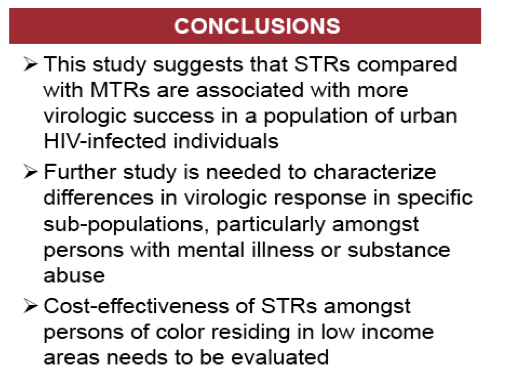

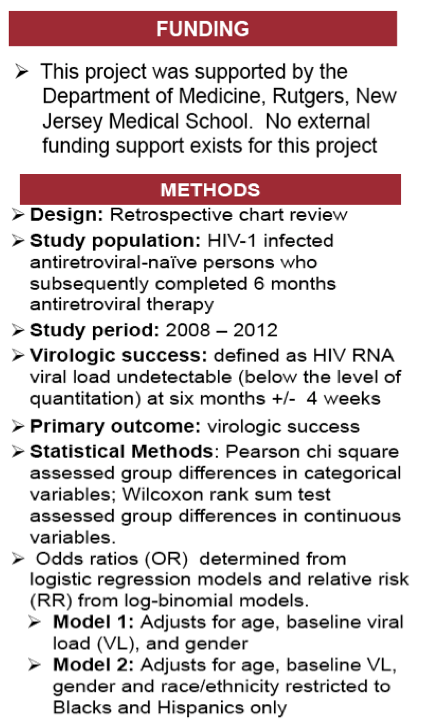
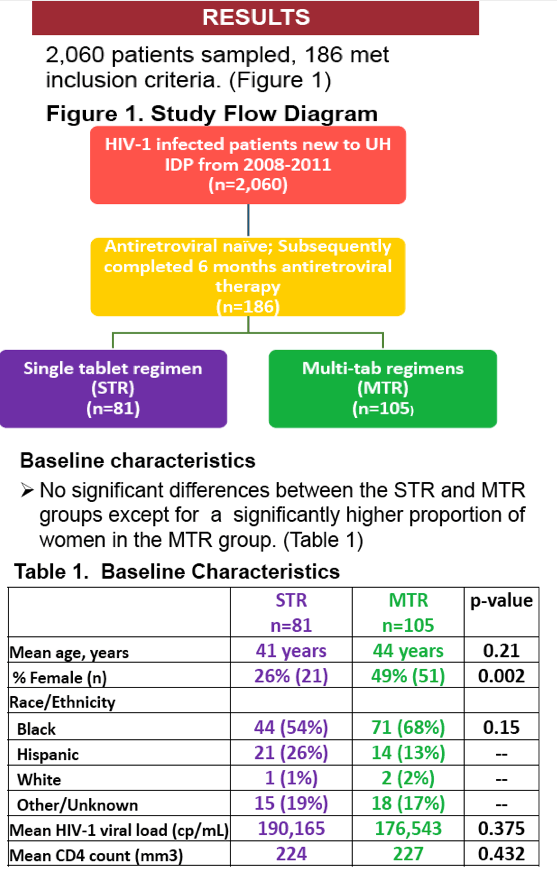
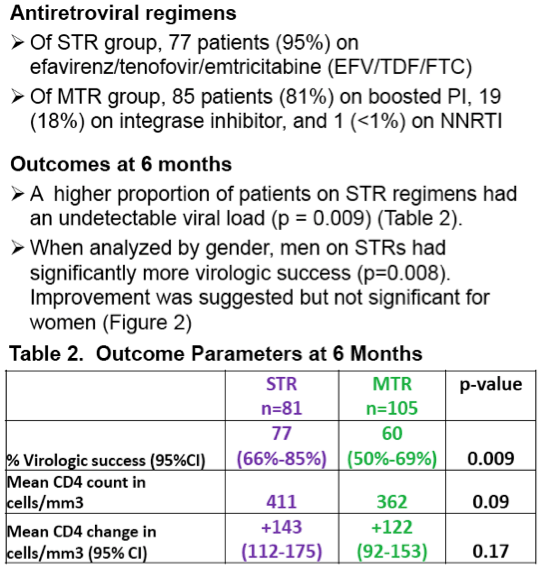
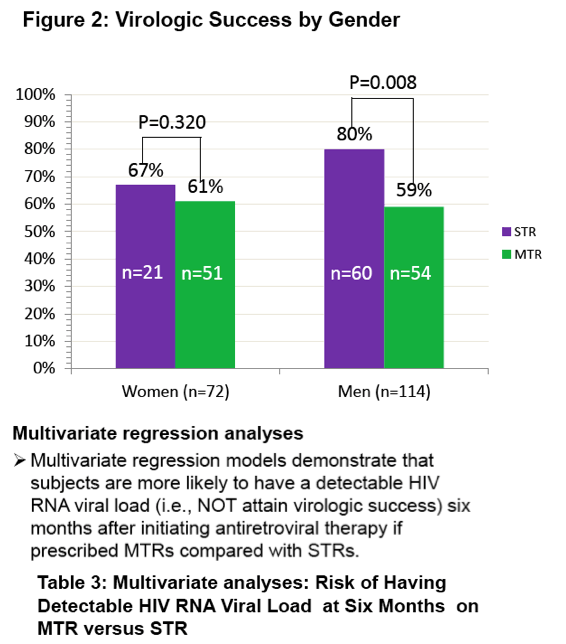
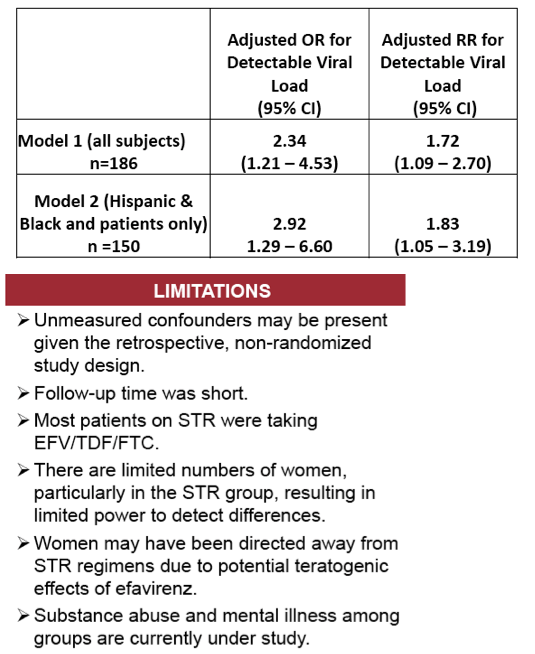
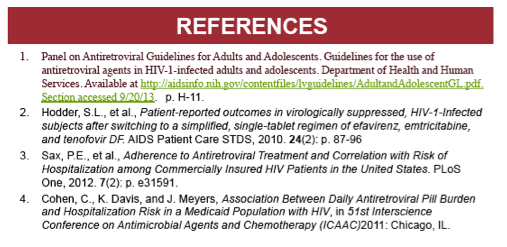
|
| |
|
 |
 |
|
|